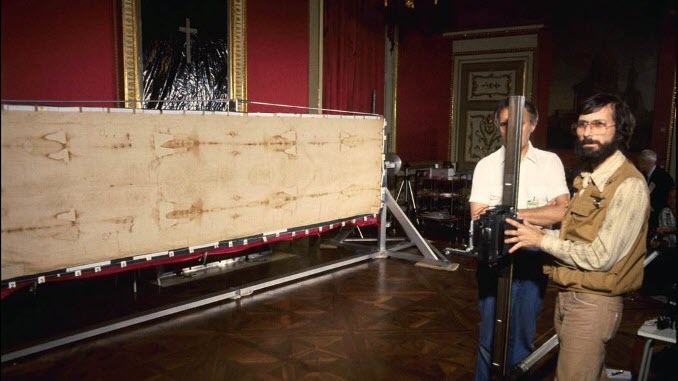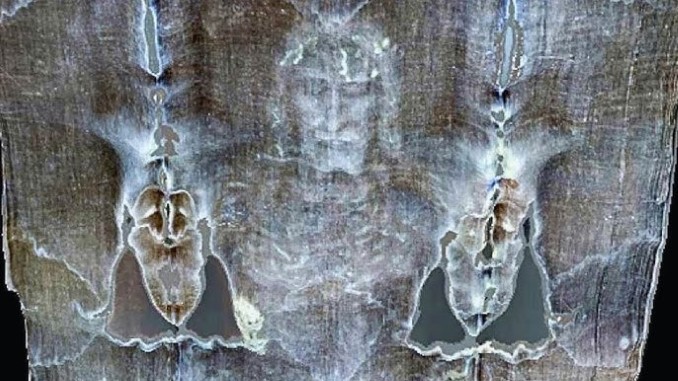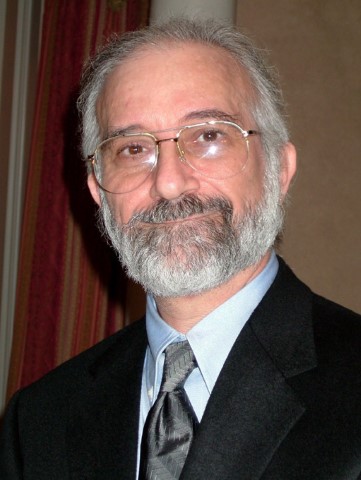
By Ulrike Granögger
Growing up in a conservative Jewish family in Pittsburgh, Pennsylvania, Barrie M. Schwortz (1946-2024) was an unlikely candidate to become the most influential proponent of the plausible authenticity of the Shroud of Turin as the actual burial cloth of Jesus of Nazareth. And yet, it is due to his open-mindedness, scientific curiosity, photographic artistry, and infectiously positive personality that what is arguably the most significant artifact in the history of Christianity can be studied by millions of interested people around the world.
In 1978, Schwortz was invited to be the “documenting photographer” for an international team of experts assembled to conduct the first-ever in-depth scientific examination of the Shroud of Turin. The scientists were from high-profile U.S. academic and federal institutions such as the Air Force Research Laboratory, Sandia Laboratories, Los Alamos National Laboratory, the Jet Propulsion Lab, and others. The study’s main goal was to determine the physical and chemical properties of the image on the Shroud and the process that might have caused it. The team’s stringent scientific approach involved systematic tests—which had been prepared in advance for over two years—that were to be carried out during five days of continuous access to the Shroud in October 1978 (with researchers taking turns to rest while others continued the around-the-clock examinations).
The results were overwhelming. The Shroud of Turin Research Project (STURP) clearly showed that there is no demonstrable trace of paint, ink, dye, or pigment on the linen. The contours of the body are not painted; the process of their deposition on the cloth is unknown and currently irreproducible.
Nor is the Shroud image a contact print made from a three-dimensional body, as has recently been argued again, because it lacks the distortions that would inevitably result when a (2D) cloth is placed over a (3D) human body. In fact, this is one of the most intriguing aspects of the image: what we are seeing is a front and dorsal image that is perfectly even, undistorted, and deposited with precisely the same intensity on the front as on the back side. Both sides are “imprinted” with equal density, as if the body had been floating in a state of mid-air weightlessness between the two sides of the cloth. The “imprint” or reflection is so thin that it penetrates only the top one or two microfibers of each thread (a coloration depth of only 200 nanometers)! Most importantly, the photographs taken from the Shroud contain three-dimensional distance information that allows for the production of a 3D hologram-type image of the body—a property that is not conveyed by conventional photography of objects.

The scientists documented and published many more unanticipated characteristics and results that incontestably show that the Shroud is neither a work of medieval art nor a fraud but one of the most unique historical as well as scientific objects ever studied. However, the technical language of the publications made these findings largely inaccessible to the average person, and much of the published science would not have reached the general public were it not for Schwortz’s dedication and commitment. Schwortz was part of all STURP proceedings during research hours, and he was able to collect a wealth of images and documents both from 1978 and afterwards. It was his passion and enthusiasm for the outstanding value of the Shroud that moved him to create the largest library of Shroud studies available for free on the Internet. Starting in January 1996, Schwortz built, expanded, and (until his death) maintained the Shroud.com website that has become the definitive archive for all articles, papers, news, interviews, and events related to the Shroud of Turin.
In 1988, three laboratories in Arizona, Oxford, and Zurich used radiocarbon dating and declared that the linen cloth dated to the medieval period of 1260-1390. This single verdict completely halted all further discussion and public interest in the Shroud, all but crushing the debate; despite the vast evidence for the Shroud’s authenticity and uniqueness, nobody dared question the dating process. With the results from the 1978 and later investigations now locked in the academic ivory tower and buried under the radiocarbon dating pronouncement, it was the foresight and devotion of Barrie M. Schwortz that salvaged the Shroud from oblivion. As a result of his unbiased approach and tireless efforts to educate the public about the innumerable puzzling facts that the Shroud research provides, millions have come to realize that the Shroud of Turin is more than a fluke.
Indeed, the radiocarbon dating has now lost its footing, as experts subsequently realized that the fiber samples were contaminated with later mending and stitching woven into the fabric. The dating is flawed.
In addition to his lifelong work on the Shroud, Schwortz had a successful career as a photographer and filmmaker. He may not be the only person responsible, but he is one of the crucial individuals who helped elevate both scientific and lay knowledge of the enigmatic cloth of Turin to a level of international recognition that may ultimately lead to one of the profoundest discoveries of science and human history: the conscious transition of life into light.
Barrie Schwortz—a man who shaped history—died on June 21, 2024.

Related:
Donate to continue the work of Barrie Schwortz and the Shroud of Turin Education and Research Association, Inc. (STERA, Inc.), a non-profit corporation registered in the state of Colorado and a tax-exempt public charity granted 501(c)(3) status by the Internal Revenue Service.
Barrie Schwortz: 40 Years of Shroud Science | A Personal Perspective (YouTube) – There are numerous presentations and interviews of Mr. Schwortz on YouTube.
Book: Ian Wilson & Barrie Schwortz, The Turin Shroud: The Illustrated Evidence (Barnes & Noble, 2000)
Shroud 3D by Petrus Soons
Dr. John Campbell on Shroud studies (YouTube)
views: 58
